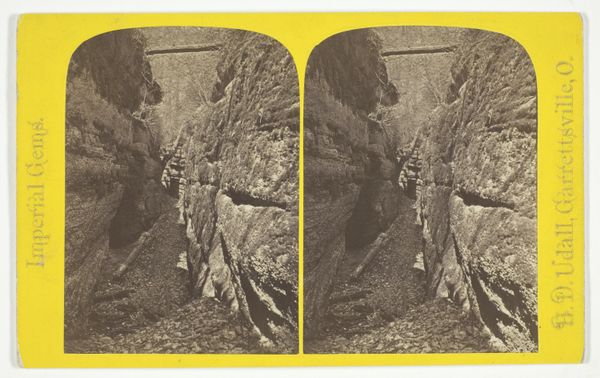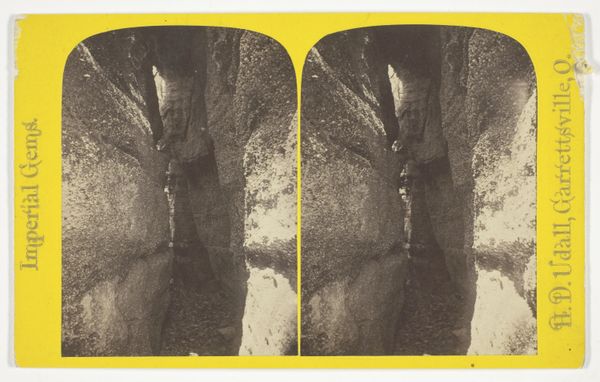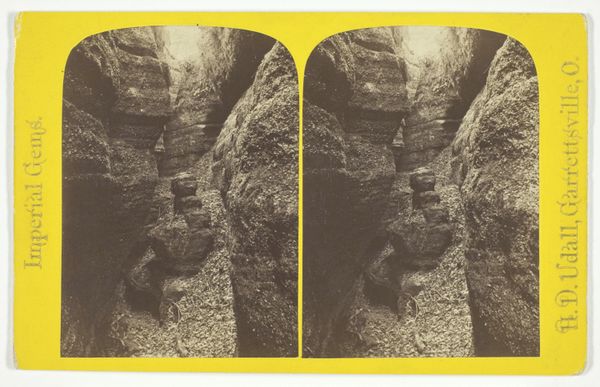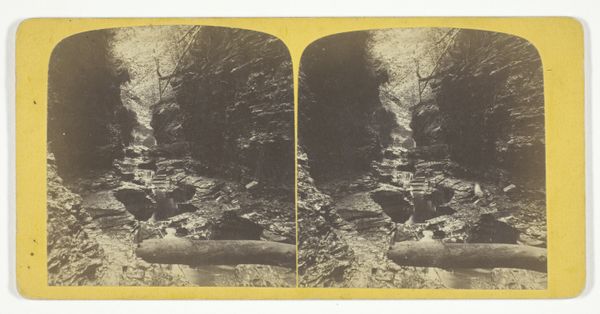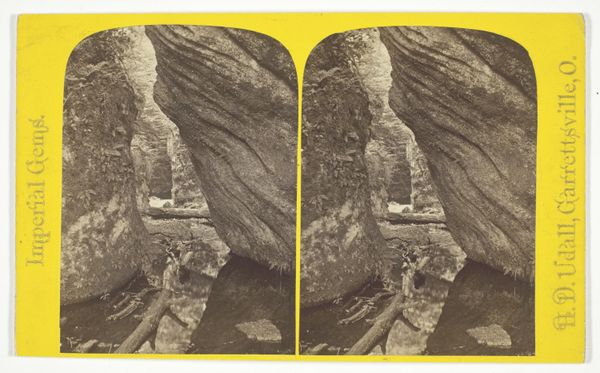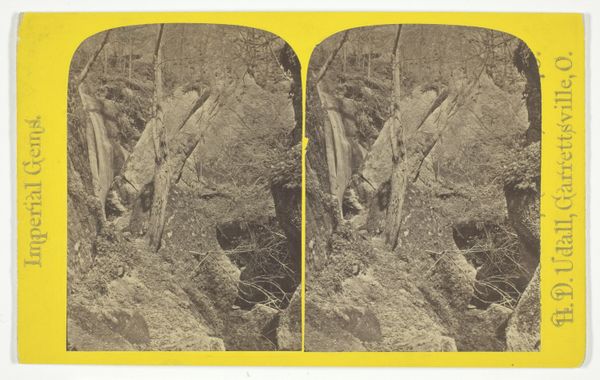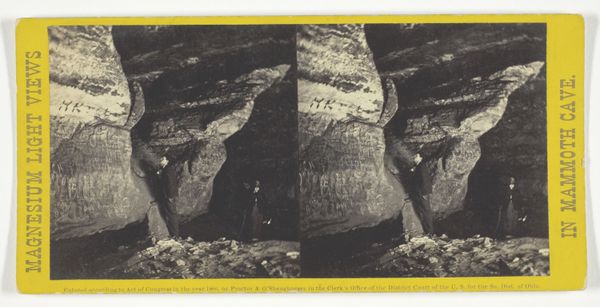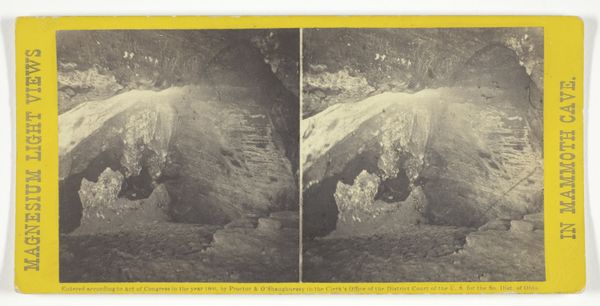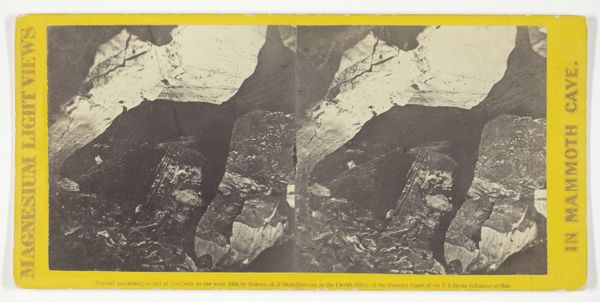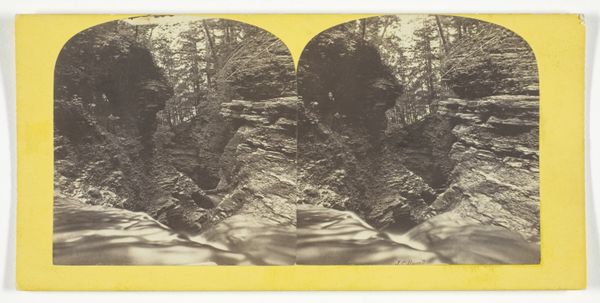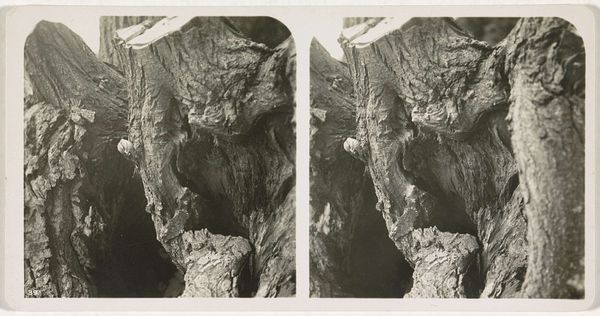
Dimensions: 10.1 × 7.2 cm (each image); 10.9 × 17.8 cm (card)
Copyright: Public Domain
This stereograph, "Window of Pluto's Cave," was created by H.D. Udall, sometime in the late 19th century, using a photographic process. The image is printed on a card, a common format for distributing photographs at the time. The two nearly identical photographs, when viewed through a stereoscope, create an illusion of depth, bringing the viewer into the dark, mysterious cave. The photographic materials would have required careful handling and expertise to produce a clear image. These would be mass-produced, and relatively inexpensive, allowing for wide distribution and consumption of images. The photograph itself captures a natural wonder, a literal window into the depths of the earth. This kind of image was popular during the Victorian era, when industrialization was changing the landscape, and there was growing fascination with the natural world, and an interest in capturing and possessing it through photography. Understanding the materials and processes involved in creating this image offers insight into the cultural values and social context of the time. It underscores the accessibility of art, and how industry shaped our relationship with nature.
Comments
No comments
Be the first to comment and join the conversation on the ultimate creative platform.
